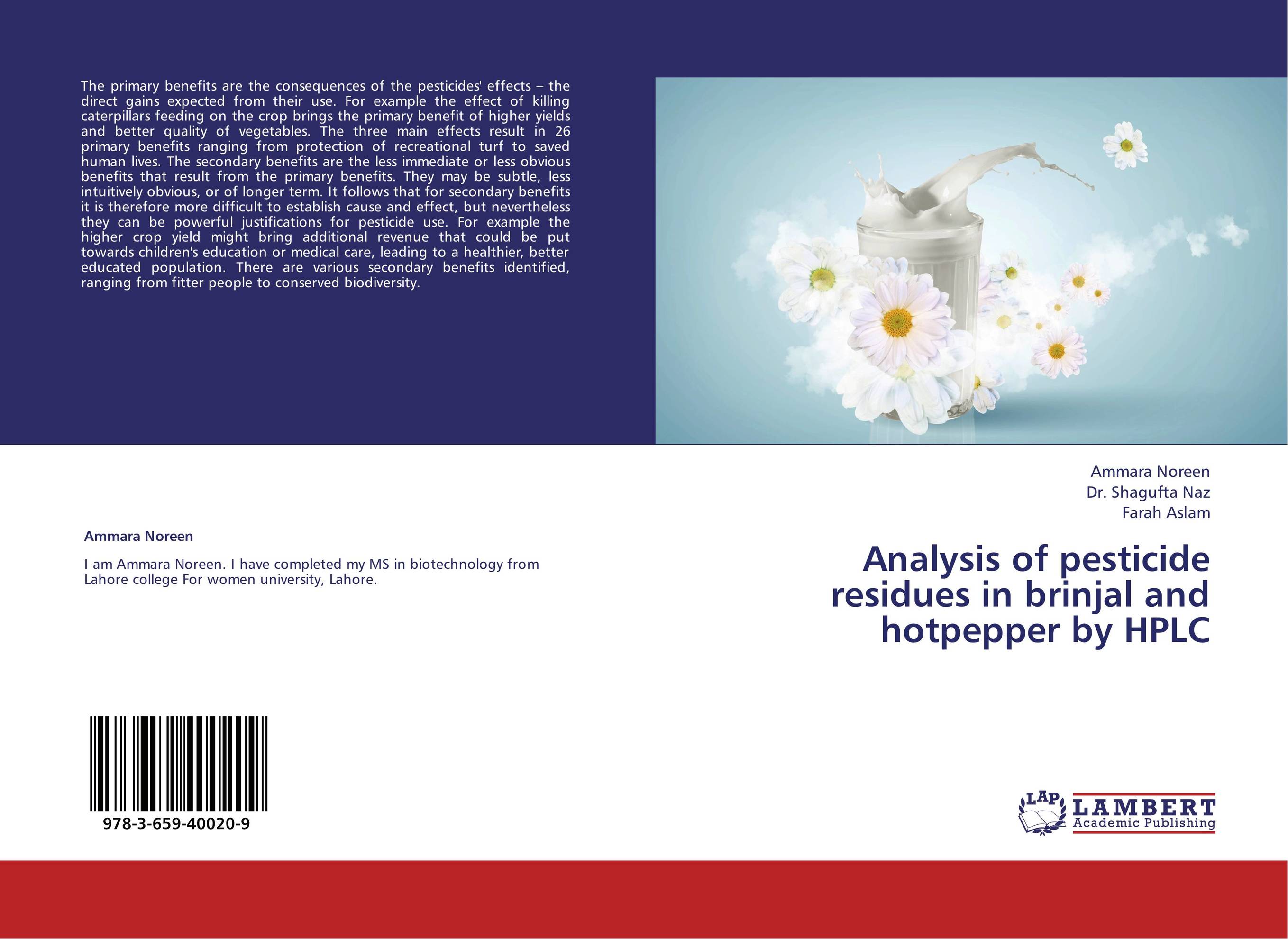| Поиск по каталогу |
|
(строгое соответствие)
|
- Профессиональная
- Научно-популярная
- Художественная
- Публицистика
- Детская
- Искусство
- Хобби, семья, дом
- Спорт
- Путеводители
- Блокноты, тетради, открытки
Analysis of pesticide residues in brinjal and hotpepper by HPLC.

В наличии
| Местонахождение: Алматы | Состояние экземпляра: новый |

Бумажная
версия
версия
Автор: Ammara Noreen,Shagufta Naz and Farah Aslam
ISBN: 9783659400209
Год издания: 2013
Формат книги: 60×90/16 (145×215 мм)
Количество страниц: 92
Издательство: LAP LAMBERT Academic Publishing
Цена: 34044 тг
Положить в корзину
| Способы доставки в город Алматы * комплектация (срок до отгрузки) не более 2 рабочих дней |
| Самовывоз из города Алматы (пункты самовывоза партнёра CDEK) |
| Курьерская доставка CDEK из города Москва |
| Доставка Почтой России из города Москва |
Аннотация: The primary benefits are the consequences of the pesticides' effects – the direct gains expected from their use. For example the effect of killing caterpillars feeding on the crop brings the primary benefit of higher yields and better quality of vegetables. The three main effects result in 26 primary benefits ranging from protection of recreational turf to saved human lives. The secondary benefits are the less immediate or less obvious benefits that result from the primary benefits. They may be subtle, less intuitively obvious, or of longer term. It follows that for secondary benefits it is therefore more difficult to establish cause and effect, but nevertheless they can be powerful justifications for pesticide use. For example the higher crop yield might bring additional revenue that could be put towards children's education or medical care, leading to a healthier, better educated population. There are various secondary benefits identified, ranging from fitter people to conserved biodiversity.
Ключевые слова: Pesticides, Brinjal, Hot pepper



